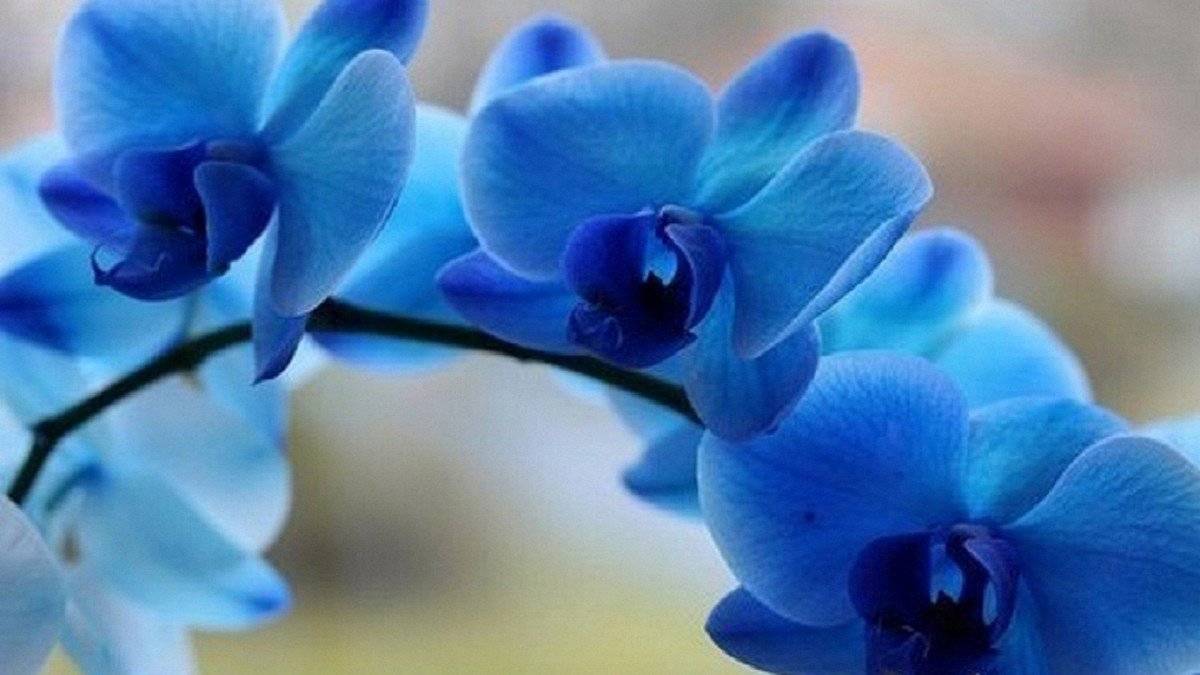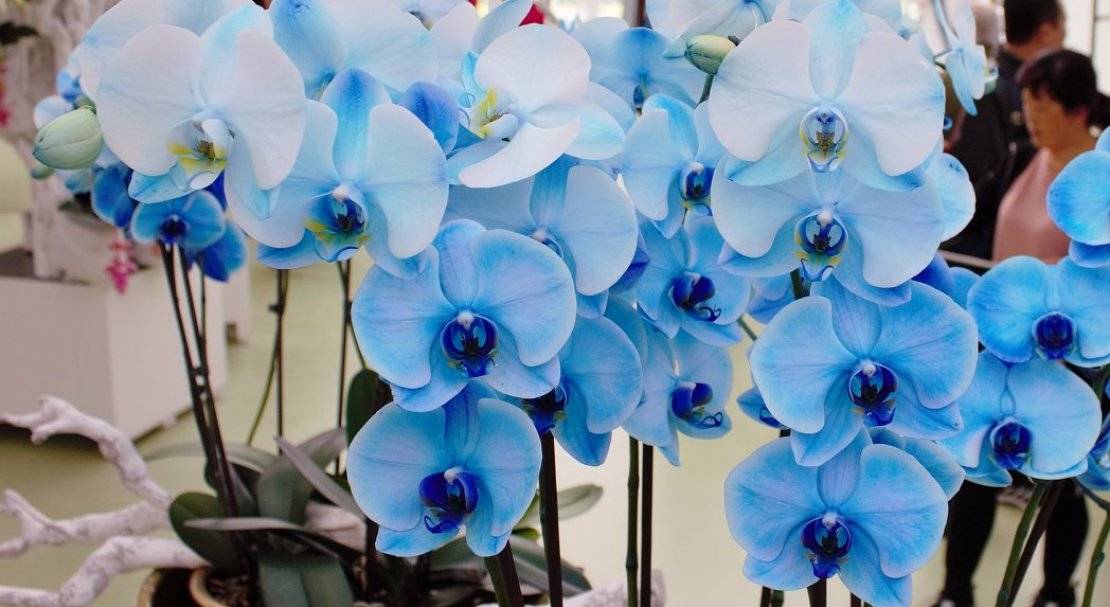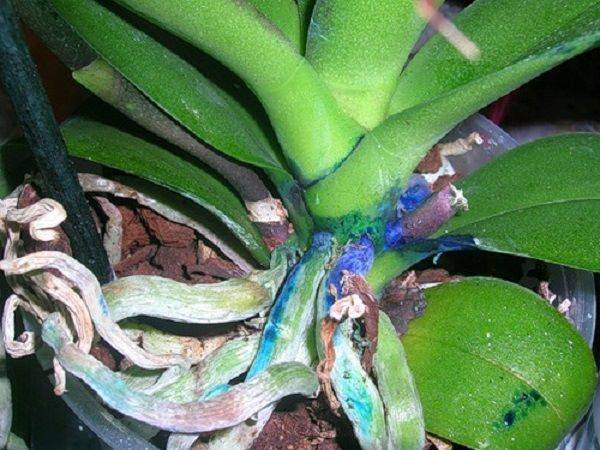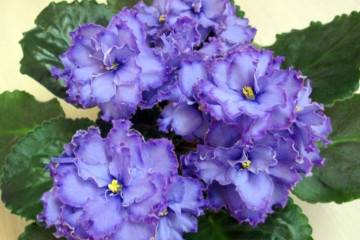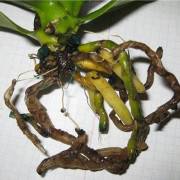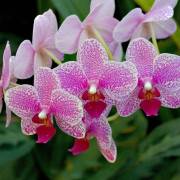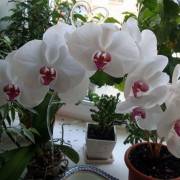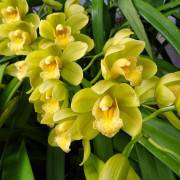Blue orchid - description, varieties, care
Content:
The blue orchid is a wonderful decoration for the office, home or garden. This elegant flower attracts attention with its unusual appearance. Each variety is different from each other, which makes the plant unique and diverse. In order not to destroy the orchid, you need to know how to properly care for it.
What does a blue orchid look like?
All representatives belong to the Orchid family, this is one of the largest families of monocotyledonous plants.
Common varieties
The blue orchid has several varieties. One of them is Wanda. The natural arrangement of the flower is found in China, Thailand and eastern India. A plant with powerful and long roots, which in nature reach 3 m.
Ascocenda are also common varieties. This is an artificially bred plant that is formed as a result of crossing wanda and ascocentrum. It has an unusual blue color. The plant is unpretentious to care for and grows well at home.
Phalaenopsis blue is also commonly found in stores. This name translates as "resemblance to a night butterfly." The flower is easy to care for even for novice growers.
When asked if there are blue orchids in nature, many growers still answer yes, but these varieties are few. For example, the Cattleya orchid pleases the eye with flowers in blue shades, it also has a pleasant fragrant aroma.
Naturally, orchids do not grow in such rich blue shades as you can find in the store. Some sellers attach coloring information to the pot, but not all do this. As a result, the buyer takes a blue phalaenopsis, and gets an ordinary white orchid.
Briefly about the history of appearance
In 2010, the first Phalaenopsis Magic Blue flower was presented at the Tropical Plants Exhibition. Agrofirm Silver Vase became its founder. The unusual appearance attracted flower growers, and after 3 months the next novelty appeared - Phalaenopsis Royal Blue. The creators received an award in the Sales Concepts category. The jury members foreshadowed great success among buyers for the blue orchid.
The agrofirm did not hide the fact that the plant was artificially tinted. Therefore, the natural shade will return after 1 bloom. During staining, natural ingredients are used that do not harm the plant in any way.
Features of home care
To provide a comfortable environment for an orchid, you must adhere to two basic rules: provide access to sunlight and maintain moisture.
Temperature
The ideal temperature for an orchid is considered to be 21-26 ° C in summer. In winter, it is maintained at 17-19 ° C.
Lighting
For good growth and flowering, the plant needs diffused light. It should be remembered that direct burning rays are destructive. It is best to place the blue orchid pot on either east or west facing windows. In winter, the lack of light is made up for with special lamps.
Watering
Orchids do not like abundant watering. It is recommended to use melt water, which is collected during rain. A container with a flower is sent to a basin filled with water for 1-2 hours.
You can water the plant from a watering can with a weak stream of water.
Spraying
Phalaenopsis must be sprayed regularly, since all members of the family love moist air. Some growers use a special humidifier, especially if the air is too dry. In other cases, a simple spray bottle is sufficient.
The plant is sprayed daily in winter, but at low air temperatures, this amount is reduced. In the summer, you can spray not the flower itself, but the air around it.
Humidity
For growth and active flowering, orchids need high air humidity. This is especially important to watch out for in winter. The humid air creates the atmosphere of the tropics, from which the flower comes. In addition to watering, you can install additional sources of moisture in the form of humidifiers or a room fountain.
Priming
The soil is the main source of nutrition and existence for plants. You can choose ready-made substrates or create your own. Recommended Ingredients:
- pine bark;
- charcoal;
- expanded clay, pumice;
- sphagnum moss.
When creating a substrate on your own, it is important to make high-quality drainage. With its help, excess moisture is eliminated and root decay is prevented.
Top dressing
Top dressing is divided into root and foliar. The shops sell special ingredients for orchids. In summer, blue phalaenopsis is fed 2-3 times a month. In winter, this process is carried out less often, once every 1.5-2 months.
When and how it blooms
With proper care, the orchid blooms every six months. The duration and frequency depend on the health of the plant. On average, flowering takes 1.5-2 months. If the flower wilted too quickly, you can transplant the plant. In some cases, orchids do not bloom well due to insufficient potting space.
Pruning
Mostly orchids are not pruned. In the rules of caring for these flowers is the term "pruning", which implies a cut of the peduncle. After the orchid has faded, it leaves a dry stem that cannot be pulled out. The peduncle must be cut at a distance of 2-3 cm from the outlet.
How the blue orchid reproduces
There are three ways of reproduction of orchids: by children, by dividing the rosette, by cuttings.
The first method involves separating the scales from the dormant kidney using a blade. It is necessary to ensure that the kidney itself is not damaged in the process. Then you should wait until the children and the first roots appear.
When propagating by cuttings, it is necessary to cut the peduncle and divide it into equal parts of 3-4 cm. In the center of each cutting there should be a dormant bud. Each slice is sprinkled with charcoal powder and sent to a warm place.
By dividing the outlet, large plants can be propagated. The orchid should have an additional rosette with its own roots. It is necessary to separate it with a knife and treat it with charcoal. Then the outlet is dried and planted in a new pot.
Transfer
The main condition for transplanting is an overgrown root system. This often happens once a year. Transplanting is best done in the spring, when the orchid is at its strongest. Planting is carried out in special transparent pots to ensure good photosynthesis.
The first 2 days after planting, the flower does not need to be watered. A few drops of zircon can be added to the water to help the plant adapt to its new environment.
Pests and diseases
Currently, many diseases and pests are known that can affect the orchid. As a rule, a florist immediately notices the presence of deviations in a flower for the following reasons:
- rotting roots;
- leaves with spots, shriveled and sluggish;
- flowering is absent for a long time.
Ticks or worms can grow on the flower. Pests destroy the leaves of the plant, as a result of which they turn yellow, dry and fall off. You can destroy parasites with insecticides.
To determine whether a blue orchid is colored or not, you need to know its variety. There are only a few varieties that are heavenly in color. It is best to go shopping in specialized stores, this will reduce the risk of getting caught by scammers who simply paint flowers.
